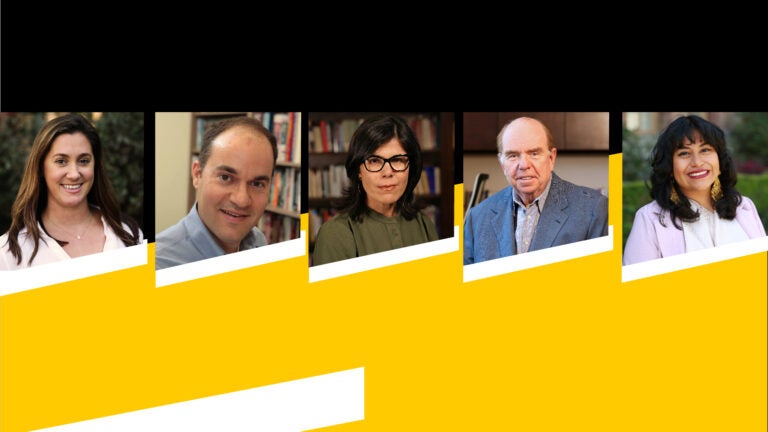
USC Dornsife honors 5 scholars with Communicator of the Year Award for outstanding public engagement
The USC Dornsife College of Letters, Arts and Sciences is proud to honor five scholars with its second annual Communicator of the Year Award. The award recognizes the extraordinary dedication of USC Dornsife scholars for their success educating the public and engaging them in significant issues related to their expertise.
Whether through thought-provoking articles and interviews, insightful social media posts or captivating public talks, the winners in humanities, natural sciences and mathematics, social sciences, center or institute leadership, and PhD student categories have all demonstrated an unwavering commitment to increasing public discourse.
Communicator of the Year, Natural Sciences and Mathematics — Shannon Gibson
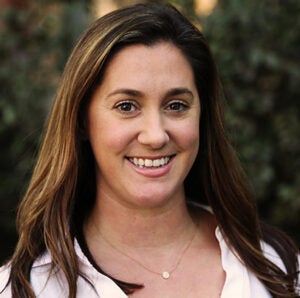 Associate Professor of Environmental Studies Shannon Gibson has been awarded the Communicator of the Year Award in the natural sciences and mathematics category for her exceptional work raising awareness about global climate issues and promoting sustainability.
Associate Professor of Environmental Studies Shannon Gibson has been awarded the Communicator of the Year Award in the natural sciences and mathematics category for her exceptional work raising awareness about global climate issues and promoting sustainability.
Gibson’s efforts to engage and educate audiences on climate change have earned her a reputation as a leading voice in the fight for a more sustainable world. Her work extends across multiple platforms, from social media to television appearances, where she has inspired others to take action and have meaningful conversations about the pressing issues of our time.
In her popular article, “Throwing soup on a Van Gogh: How young climate activists are making their voices heard at COP27 over Egypt’s suppression,” written for The Conversation, Gibson highlighted the challenges faced by climate activists and the strategies they use to evade protest restrictions and draw attention to climate issues. Her insights and expertise have been amplified through social media platforms and news media appearances, including a notable appearance on PBS NewsHour.
Gibson’s impact extends beyond her writing and media work. Throughout the year, she has also engaged audiences at numerous events and conferences, including the International Forum on Global Climate Change and the International Studies Association, where she spoke on the topics of higher education’s role in responding to climate change and diversification of academic curricula. As Executive-Secretary of the United Nations Framework Convention on Climate Change during the Association of Pacific Rim Universities’ Climate Simulation last summer, Gibson played a critical role in shaping the conversation around climate policy.
Communicator of the Year, Social Sciences — Matt Khan
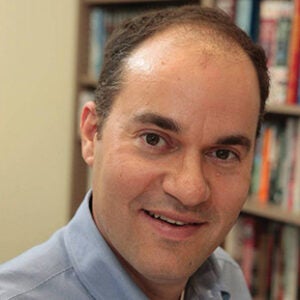 Matthew Khan, Provost Professor of Economics and Spatial Sciences, shared his expertise with the public through news media, his own articles, and an active, engaging presence on social media, particularly Twitter.
Matthew Khan, Provost Professor of Economics and Spatial Sciences, shared his expertise with the public through news media, his own articles, and an active, engaging presence on social media, particularly Twitter.
In 2022, Kahn wrote three popular articles for The Conversation, examining the costs of climate change, explaining how smart electricity meters may reduce household expenses and pollution, and exploring 40-year-old predictions about what life would be like today.
His newly published book, Going Remote How the Flexible Work Economy Can Improve Our Lives and Our Cities(University of California Press, 2022), shared his scholarship on the timely topic of remote work. It helped to generate numerous interviews with podcasters and print media outlets, including the Los Angeles Times, L.A. Business Journaland Forbes. He also shared his expertise on the topic through a well-attended Dornsife Dialogues event.
In interviews with national media including Marketplace and the The Wall Street Journal, he used his deep knowledge of environmental economics to educate audiences on emerging methods for assessing climate risks for homeowners.
He also co-wrote, with undergraduate economics major Robert Huang, a piece for Business Insider discussing the growing need for land to house solar panel arrays, windmills and green facilities. The popular piece served a deeper purpose — encouraging a rising USC Dornsife scholar to share his expertise with the world.
Communicator of the Year, Humanities — Natalia Molina
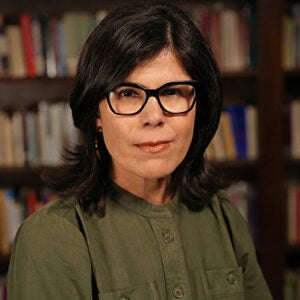 Natalia Molina, Distinguished Professor of American Studies and Ethnicity, is being honored for her outstanding work to engage the public, particularly on how the United States’ history of labor and immigration has shaped modern lives.
Natalia Molina, Distinguished Professor of American Studies and Ethnicity, is being honored for her outstanding work to engage the public, particularly on how the United States’ history of labor and immigration has shaped modern lives.
Her newly published book, A Place at the Nayarit: How a Mexican Restaurant Nourished a Community (University of California Press, 2022), explores the history of immigrant workers as place makers in Los Angeles, including her own grandmother, who nurtured and fed the community through the restaurants they established, which served as “urban anchors.” The book has received critical acclaim and has been longlisted for the 2022 Porchlight Business Book Awards and selected as one of the Los Angeles Times’ Best Books of 2022.
Molina’s public engagement work in 2022 included more than 20 interviews on television, radio, podcasts and in print media regarding topics such as immigration, labor, race, gentrification, gender, and sexuality — all themes central to her research. She also delivered academic keynotes and invited talks across the country, participated in book panels and community events and wrote opinion pieces for the Los Angeles Times and Zócalo Public Square.
The writer of a Los Angeles Times profile titled “USC historian Natalia Molina is reframing how we think about race,” aptly summarizes her impact: “Molina’s work has advanced our understanding of how ideas of race and citizenship were produced and politicized and how they influence the way we regard one another today. How we fill out the census, whom we consider white or fully American — none of it is natural or accidental, she argues.”
Communicator of the Year, Center or Institute Leader — Robert Shrum
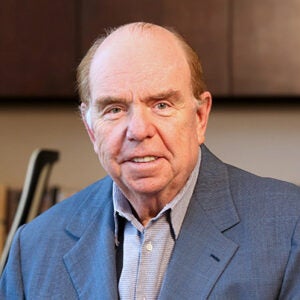 Robert Shrum, professor of the practice of political science and director of the USC Dornsife Center for the Political Future (CPF), dedicates his tireless public engagement efforts to educating the public about national and local elections and the issues related to them.
Robert Shrum, professor of the practice of political science and director of the USC Dornsife Center for the Political Future (CPF), dedicates his tireless public engagement efforts to educating the public about national and local elections and the issues related to them.
Journalists throughout the country seek his sharp political insight and expertise, which allows him to bring attention to the important problems and solutions related to political matters. If available, Shrum graciously accepts nearly every interview request — from Annenberg Media to The New York Times. His commentary can also be found on CPF’s popular podcast, The Bully Pulpit, and on his very active Twitter account, where he has more than 19,000 followers.
As the holder of the Carmen H. and Louis Warschaw Chair in Practical Politics, Shrum hosted and moderated numerous panels and conferences in 2022, including the annual Climate Forward conference and Warschaw Conference on Practical Politics. What frequently distinguishes his events is the participation of prominent figures from opposing sides, who model civil discourse and advance politics in the broadest public interest.
Last year, under Shrum’s leadership, the Center for the Political Future also hosted dozens of events that increased public understanding of national and local politics, including the first televised debate between Los Angeles mayoral candidates, a hugely popular Election Day watch party during which he provided live commentary, and a widely viewed Dornsife Dialogues event he moderated regarding control of Congress after the 2022 midterms.
Communicator of the Year, PhD Student — Michelle Vasquez Ruiz
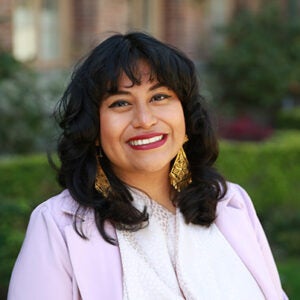 Tackling topics that include racism, immigration, and indigenous rights, Michelle Vasquez Ruiz, a PhD candidate in American studies and ethnicity, has demonstrated a vigorous commitment to sharing her expertise with the public through the news media, social media platforms and speaking engagements.
Tackling topics that include racism, immigration, and indigenous rights, Michelle Vasquez Ruiz, a PhD candidate in American studies and ethnicity, has demonstrated a vigorous commitment to sharing her expertise with the public through the news media, social media platforms and speaking engagements.
Ruiz frequently takes to her social media platforms, including Instagram and TikTok, to share her research and experiences on what it means to be Oaxacan in the U.S. and she uses her scholarship to improve public understanding of racial issues and to combat racism.
Last year, she began using art to engage audiences, developing a social media following for her work that blends Oaxacan Indigenous culture and popular culture. She also launched the “Boyle Heights Traditions and Innovations“ exhibit, co-curated with the Museum of Boyle Heights. It recognizes the entrepreneurial history of immigrants in the Los Angeles neighborhood of Boyle Heights. Television network Telemundo featured an interview with her in a related story about the importance of highlighting immigrant history in museums.
When not sharing her expertise through art and social media last year, she was often engaging the public through published essays, speaking engagements with political leader and historians, and news media that include Fox 11 News, public radio station KCRW and the Tokyo-based magazine Keizai Ka.
Ruiz says she hopes to build more bridges between academia and the public as she completes her PhD program.